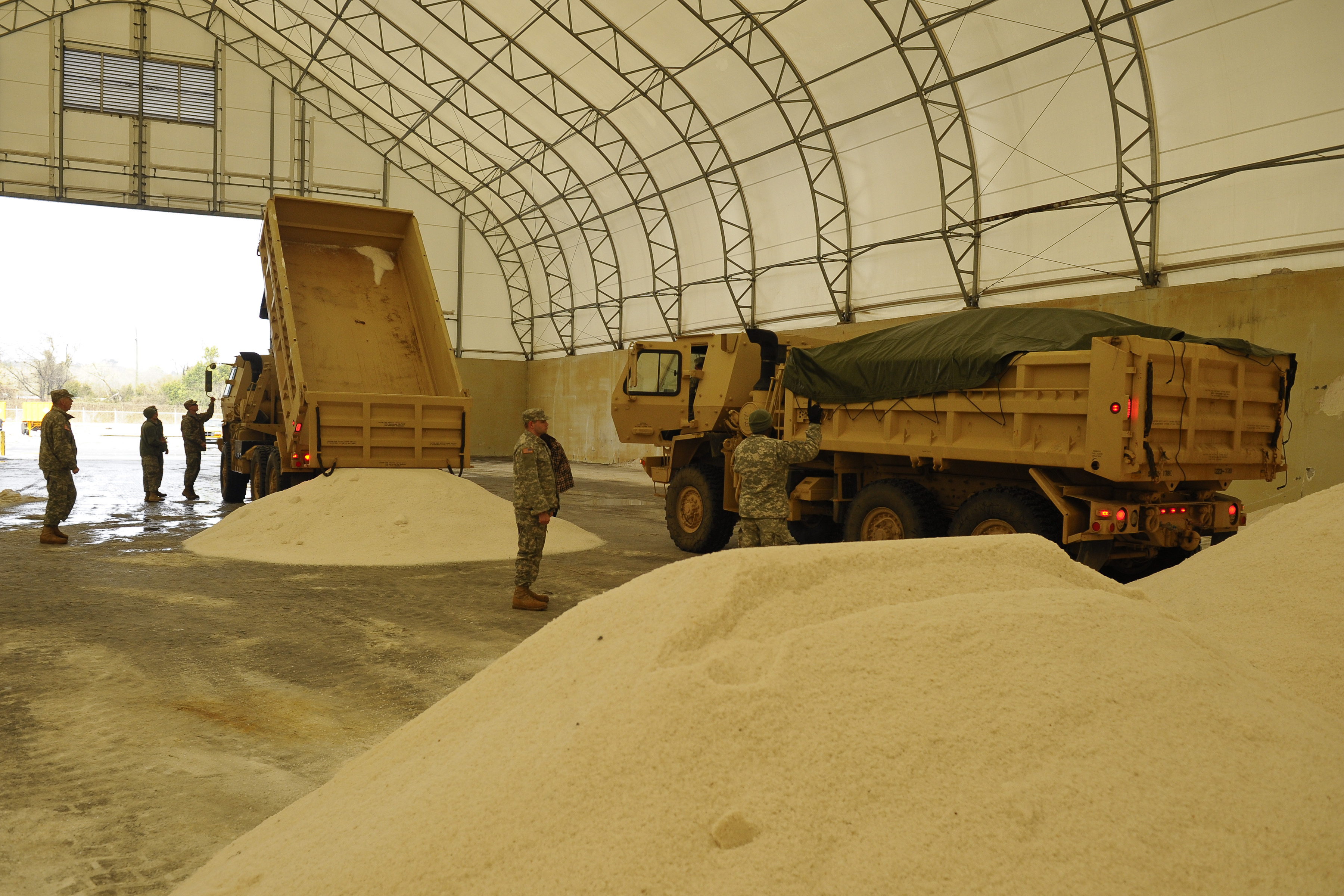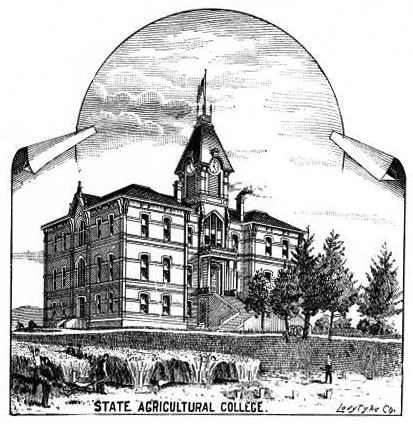|
Cooling Bath
A cooling bath or ice bath, in laboratory chemistry practice, is a liquid mixture which is used to maintain low temperatures, typically between 13 °C and −196 °C. These low temperatures are used to collect liquids after distillation, to remove solvents using a rotary evaporator, or to perform a chemical reaction below room temperature (see Kinetic control). Cooling baths are generally one of two types: (a) a cold fluid (particularly liquid nitrogen, water, or even air) — but most commonly the term refers to (b) a mixture of 3 components: (1) a cooling agent (such as dry ice or ice); (2) a liquid "carrier" (such as liquid water, ethylene glycol, acetone, etc.), which transfers heat between the bath and the vessel; (3) an additive to depress the melting point of the solid/liquid system. A familiar example of this is the use of an ice/rock-salt mixture to freeze ice cream. Adding salt lowers the freezing temperature of water, lowering the minimum temperature attai ... [...More Info...] [...Related Items...] OR: [Wikipedia] [Google] [Baidu] |
Sodium Chloride
Sodium chloride , commonly known as Salt#Edible salt, edible salt, is an ionic compound with the chemical formula NaCl, representing a 1:1 ratio of sodium and chloride ions. It is transparent or translucent, brittle, hygroscopic, and occurs as the mineral halite. In its edible form, it is commonly used as a condiment and curing (food preservation), food preservative. Large quantities of sodium chloride are used in many industrial processes, and it is a major source of sodium and chlorine compounds used as feedstocks for further Chemical synthesis, chemical syntheses. Another major application of sodium chloride is deicing of roadways in sub-freezing weather. Uses In addition to the many familiar domestic uses of salt, more dominant applications of the approximately 250 million tonnes per year production (2008 data) include chemicals and de-icing.Westphal, Gisbert ''et al.'' (2002) "Sodium Chloride" in Ullmann's Encyclopedia of Industrial Chemistry, Wiley-VCH, Weinheim . Chem ... [...More Info...] [...Related Items...] OR: [Wikipedia] [Google] [Baidu] |
Laboratory Techniques
A laboratory (; ; colloquially lab) is a facility that provides controlled conditions in which scientific or technological research, experiments, and measurement may be performed. Laboratories are found in a variety of settings such as schools, universities, privately owned research institutions, corporate research and testing facilities, government regulatory and forensic investigation centers, physicians' offices, clinics, hospitals, regional and national referral centers, and even occasionally personal residences. Overview The organisation and contents of laboratories are determined by the differing requirements of the specialists working within. A physics laboratory might contain a particle accelerator or vacuum chamber, while a metallurgy laboratory could have apparatus for casting or refining metals or for testing their strength. A chemist or biologist might use a wet laboratory, while a psychologist's laboratory might be a room with one-way mirrors and hidden cameras in ... [...More Info...] [...Related Items...] OR: [Wikipedia] [Google] [Baidu] |
University Of Siegen
The University of Siegen () is a public research university located in Siegen, North Rhine-Westphalia and is part of the Deutsche Forschungsgemeinschaft, a society of Germany's leading research universities. The university was founded in 1972. As of 2017, 18,618 students were enrolled at the university. History Siegen's heritage as a centre for education and research dates back to the 16th century. In 1536, William I, Count of Nassau-Siegen charged Saxon educator and theologian Erasmus Sarcerius with the task of establishing a Latin school. During the period 1594 to 1599/1600 and 1606 to 1609, the Calvinist-Reformed Herborn Academy (Academia Nassauensis) moved from Herborn to Siegen, where it was accommodated in the buildings of the lower castle. "Wiesenbauschule" In 1853, Wiesenbauschule landscaping school was established, which soon gained a reputation outside of its local area. Here, landscaping and land improvements including irrigation techniques and the drainage of ... [...More Info...] [...Related Items...] OR: [Wikipedia] [Google] [Baidu] |
Oregon State University
Oregon State University (OSU) is a Public university, public Land-grant university, land-grant research university in Corvallis, Oregon, United States. OSU offers more than 200 undergraduate degree programs and a variety of graduate and doctoral degrees through all 11 of the university's colleges. It has the seventh-largest engineering college in the nation (2023). Undergraduate enrollment for all colleges combined averages over 32,000 while an additional 5,000 students are engaged in post-graduate coursework through the university. In 2023, over 37,000 students were enrolled at OSU, making it the largest university in the state. Out-of-state students typically make up over one-quarter of the student body. Since its founding, over 272,000 students have graduated from OSU. The university is Carnegie Classification of Institutions of Higher Education, classified among "R1: Doctoral Universities – Very high research activity". Initially chartered as a land-grant university, OS ... [...More Info...] [...Related Items...] OR: [Wikipedia] [Google] [Baidu] |
Butterworth-Heinemann
Butterworth–Heinemann is a British publishing company specialised in professional information and learning materials for higher education and professional training, in printed and electronic forms. It was formed in 1990 by the merger of Heinemann Professional Publishing and Butterworths Scientific, both subsidiaries of Reed International. With its earlier constituent companies, the founding dates back to 1923. It has publishing units in Oxford (UK) and Waltham, Massachusetts (United States). As of 2006, it is an imprint of Elsevier. See also *LexisNexis Butterworths LexisNexis is an American data analytics company headquartered in New York, New York. Its products are various databases that are accessed through online portals, including portals for computer-assisted legal research (CALR), newspaper search, ... References External links * Book publishing companies of the United Kingdom Elsevier imprints {{publish-corp-stub ... [...More Info...] [...Related Items...] OR: [Wikipedia] [Google] [Baidu] |
Blackwell Publishing
Wiley-Blackwell is an international scientific, technical, medical, and scholarly publishing business of John Wiley & Sons. It was formed by the merger of John Wiley & Sons Global Scientific, Technical, and Medical business with Blackwell Publishing in 2007. Wiley-Blackwell is now an imprint that publishes a diverse range of academic and professional fields, including biology, medicine, physical sciences, technology, social science, and the humanities. Blackwell Publishing history Blackwell Publishing was formed by the 2001 merger of two Oxford-based academic publishing companies, Blackwell Science, founded in 1939 as Blackwell Scientific Publishing, and Blackwell Publishers, founded in 1922 as Basil Blackwell & Mott. Blackwell Publishers, founded in 1926, had its origins in the 19th century Blackwell's family bookshop and publishing business. The merger between the two publishing companies created the world's leading learned society publisher. The group then acquired BMJ B ... [...More Info...] [...Related Items...] OR: [Wikipedia] [Google] [Baidu] |
Pumpable Ice Technology
Pumpable ice technology (PIT) uses thin liquids, with the cooling capacity of ice. Pumpable ice is typically a slurry of ice crystals or particles ranging from 5 micrometers to 1 cm in diameter and transported in brine, seawater, food liquid, or gas bubbles of air, ozone, or carbon dioxide. Terminology Beyond generic terms, such as pumpable, jelly, or slurry ice, there are many trademark names for such coolant, like "Deepchill", "Beluga", "optim", "flow", "fluid", "jel", "binary", "liquid", "maxim", "whipped", and "bubble slurry" ice. These trademarks are authorized by industrial ice maker production companies in Australia, Canada, China, Germany, Iceland, Israel, Russia, Spain, United Kingdom, and the US. Technological process Pumpable ice can be produced in one of two ways: either by mixing crushed ice with a liquid or by freezing water within a liquid. *The primary way is to manufacture commonly used forms of crystal solid ice, such as plate, tube, shell or flake ice ... [...More Info...] [...Related Items...] OR: [Wikipedia] [Google] [Baidu] |
List Of Cooling Baths
This article contains a list of cooling bath mixtures. Table References * * * {{Cite journal , last1 = Rondeau , first1 = Roger E. , year = 1966 , title = Slush baths , journal = Journal of Chemical & Engineering Data , volume = 11 , pages = 124 , doi = 10.1021/je60028a037 Cooling Cooling is removal of heat, usually resulting in a lower temperature and/or Phase transition, phase change. Temperature lowering achieved by any other means may also be called cooling. The Heat transfer, transfer of Internal energy, thermal energ ... baths Baths ... [...More Info...] [...Related Items...] OR: [Wikipedia] [Google] [Baidu] |
2-propanol
Isopropyl alcohol (IUPAC name propan-2-ol and also called isopropanol or 2-propanol) is a colorless, flammable, organic compound with a pungent alcoholic odor. Isopropyl alcohol, an organic polar molecule, is miscible in water, ethanol, and chloroform, demonstrating its ability to dissolve a wide range of substances including ethyl cellulose, polyvinyl butyral, oils, alkaloids, and natural resins. Notably, it is not miscible with salt solutions and can be separated by adding sodium chloride in a process known as salting out. It forms an azeotrope with water, resulting in a boiling point of 80.37 °C and is characterized by its slightly bitter taste. Isopropyl alcohol becomes viscous at lower temperatures, freezing at −89.5 °C, and has significant ultraviolet-visible absorbance at 205 nm. Chemically, it can be oxidized to acetone or undergo various reactions to form compounds like isopropoxides or aluminium isopropoxide. As an isopropyl group linked ... [...More Info...] [...Related Items...] OR: [Wikipedia] [Google] [Baidu] |
American Chemical Society
The American Chemical Society (ACS) is a scientific society based in the United States that supports scientific inquiry in the field of chemistry. Founded in 1876 at New York University, the ACS currently has more than 155,000 members at all degree levels and in all fields of chemistry, chemical engineering, and related fields. It is one of the world's largest scientific societies by membership. The ACS is a 501(c) organization, 501(c)(3) non-profit organization and holds a congressional charter under Title 36 of the United States Code. Its headquarters are located in Washington, D.C., and it has a large concentration of staff in Columbus, Ohio. The ACS is a leading source of scientific information through its peer-reviewed scientific journals, national conferences, and the Chemical Abstracts Service. Its publications division produces over 80 Scientific journal, scholarly journals including the prestigious ''Journal of the American Chemical Society'', as well as the weekly tr ... [...More Info...] [...Related Items...] OR: [Wikipedia] [Google] [Baidu] |
Freezing-point Depression
Freezing-point depression is a drop in the maximum temperature at which a substance freezing, freezes, caused when a smaller amount of another, non-Volatility (chemistry), volatile substance is added. Examples include adding salt into water (used in ice cream makers and for De-icing#Chemical de-icers, de-icing roads), Alcohol (chemistry), alcohol in water, Ethylene glycol, ethylene or propylene glycol in water (used in antifreeze in cars), adding copper to molten silver (used to make Solder#Hard_solder, solder that flows at a lower temperature than the silver pieces being joined), or the mixing of two solids such as impurities into a finely powdered drug. In all cases, the substance added/present in smaller amounts is considered the solute, while the original substance present in larger quantity is thought of as the solvent. The resulting liquid solution or solid-solid mixture has a lower Melting point, freezing point than the pure solvent or solid because the chemical potentia ... [...More Info...] [...Related Items...] OR: [Wikipedia] [Google] [Baidu] |





